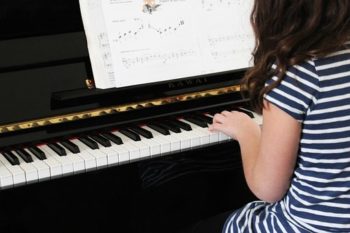Understanding Our Children’s Preferred Learning Styles for Academic Success
Understanding Our Children’s Preferred Learning Styles for Academic Success
 When I tutor students in the Goggle classroom, I listen and watch them carefully as they describe how they prefer to learn when reading and writing. For example, one student may describe how she gains lots of information about a story by looking at the pictures in the story first. Another student may want to write down his answer about what he just read before summarizing the story in two sentences. A third student may prefer drawing pictures or acting out the story before discussing or writing a story.
When I tutor students in the Goggle classroom, I listen and watch them carefully as they describe how they prefer to learn when reading and writing. For example, one student may describe how she gains lots of information about a story by looking at the pictures in the story first. Another student may want to write down his answer about what he just read before summarizing the story in two sentences. A third student may prefer drawing pictures or acting out the story before discussing or writing a story.
Most teachers consider students’ various learning styles when working with individual students. Below are five primary learning styles described in Data Driven Differentiation in the Standards-Based Classroom by Gayle H. Gregory and Lin Kuzmich:
- Linguistic learners like to write, play word games, learn vocabulary, debate, and create jokes.
- Musical learners love to sing, create tunes and rhymes, and make a song as part of a solution.
- Logical/mathematical learners problem solve through abstract reasoning with numbers, formulas, patterns, puzzles, and data.
- Visual/spatial learners draw pictures, solutions, and models with color and media.
- Body/kinesthetic learners use gestures, actions, and act out to demonstrate learning.
Help for Students and Parents
When students and their teacher understand how they like to learn, they can work together to determine how the students can best show what they have learned during a given assignment. During parent-teacher conferences, the teacher can help parents reinforce their children’s learning at home by discussing a student’s preferred learning style.
Reinforcing Learning at Home
As we reinforce our children’s preferred learning styles at home, we validate each child as a successful learner. We can then help each child expand his or her ability to learn first by using a preferred learning style to demonstrate learning. Then we can encourage our child to use other learning styles for problem solving. Many teachers also encourage students to show their work when using several different learning styles. For example, teachers may have students demonstrate their writing skills by illustrating their stories (visual leaners), writing their stories (linguistic learners), peer editing stories (logical and linguistic learners) and then discussing the stories with the class (linguistic learners).
Much success as you reinforce your children’s learning styles at home and encourage them to expand their use of other learning styles to strengthen their learning abilities.
Mary Ann